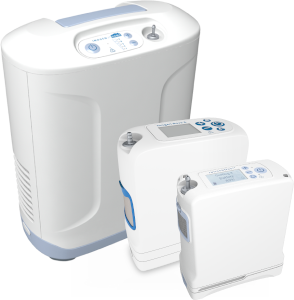
Most people are unclear about what pneumonia symptoms look like and how to identify them. That is because pneumonia can have a variety of causes, including bacterial, fungal and viral, each of which affects the severity of the symptoms and the infection itself. While all types of pneumonia involve the air sacs (alveoli) in one or both sides of the lungs filling up with fluid or pus, the seriousness of the disease can vary quite a lot.[1] As such, if you are at a higher risk of developing pneumonia, it is a good idea to become familiar with pneumonia symptoms and signs so that you know when to seek medical attention.
Signs of Pneumonia
Pneumonia symptoms can vary from so mild you barely notice them, to so severe that hospitalization is required. How your body responds to pneumonia depends on the type of germ causing the infection, your age and your overall health.
The signs and symptoms of pneumonia may include:[2]
- Cough, which may produce greenish, yellow or even bloody mucus
- Fever, sweating and shaking chills
- Shortness of breath
- Rapid, shallow breathing
- Sharp or stabbing chest pain that gets worse when you breathe deeply or cough
- Loss of appetite, low energy, and fatigue
- Nausea and vomiting, especially in small children
- Confusion, especially in older people
If you have the following signs of pneumonia, see your doctor right away. If you are in a high-risk group, seek emergency medical attention. 2
- Difficulty breathing
- Blue-tinged lips or nail beds
- Sharp or stabbing chest pain when you breathe or cough
- High fever
- Cough, with phlegm or mucus that does not improve with time
It’s especially important to get medical attention for pneumonia if you are in a high-risk group, including adults older than age 65, children age two or younger, people with an underlying health condition or weakened immune system. For some of these vulnerable individuals, pneumonia can quickly become a life- threatening condition.[2]
It is important to note that the pneumonia symptoms may vary in certain populations. Newborns and infants may not show any signs of the infection; or they may vomit, have a fever and cough or appear restless, sick, or tired and listless. Older adults and people with serious illnesses or compromised immune symptoms may experience fewer and milder symptoms, such as a lower than normal temperature. Older adults with pneumonia sometimes show signs of confusion or other changes in mental alertness. People with chronic lung diseases are likely to experience worsening symptoms.[2]
Types of Pneumonia
Pneumonia can be caused by a wide variety of bacteria, viruses and fungi in the air we breathe. However, each type has a different set of causes, symptoms and treatments.
Bacterial Pneumonia
The most common type of bacterial pneumonia is call pneumococcal pneumonia, which is caused by a germ that normally lives in the upper respiratory tract (Streptococcus pneumoniae). Bacterial pneumonia can occur on its own or develop after you’ve had a viral cold or the flu. When it affects one lobe of the lung is it called lobar pneumonia.1 Even though bacterial pneumonia is the most common form, it tends to be more serious than other types of pneumonia. Symptoms can develop gradually or suddenly. Fever may rise as high as a dangerous 105 degrees F, with profuse sweating and rapidly increased breathing and pulse rate. Lips and nailbeds may have a bluish color due to lack of oxygen in the blood. A patient’s mental state may be confused or delirious.[2]
Some types of bacteria cause what is known as “atypical” pneumonia. One especially dangerous form is Legionella pneumophila, better known as Legionnaire’s disease. Unlike other bacterial pneumonias, Legionella is not passed from person to person, but rather outbreaks have been linked to exposure to contaminated water from cooling towers, whirlpool spas and outdoor fountains.[1]
Viral Pneumonia
Viral pneumonia is caused by the same viruses that cause respiratory tract infections. The flu virus and the virus that causes COVID-19 are the most common cause in adults, while respiratory syncytial virus (RSV) is the most common cause in young children.[1] The symptoms of viral pneumonia usually develop over a period of several days. Early symptoms are similar to flu symptoms: fever, dry cough, headache, muscle pain and weakness. Within a day or two, the symptoms typically get worse – worsening cough, shortness of breath and muscle pain. These symptoms may be accompanied by a high fever and there may be blueness of the lips.[2]
Most cases of viral pneumonia are relatively mild and last a shorter time than bacterial pneumonia. COVID-19 pneumonia generally affects both lungs and may be severe, causing low levels of oxygen in the blood and lead to respiratory failure and may cause acute respiratory distress syndrome (ARDS). Recovery may take months before symptoms, such as breathing difficulties ease. If the flu virus is the cause of your viral pneumonia it may be severe and sometimes fatal. The virus invades the lungs and multiplies; however there are almost no physical signs of lung tissues becoming filled with fluid. This pneumonia is most serious in people who have pre-existing heart or lung disease and pregnant women. It is important to be aware that viral pneumonia may be complicated by a secondary bacterial infection, with all of the typical symptoms of bacterial pneumonia.[1]
Fungal Pneumonia
Fungal pneumonia is a non-contagious lung infection caused by fungal spores. It happens when the spores mix with the air and are inhaled, or when an inactive infection is reactivated. Fungal pneumonia symptoms are those of the flu: coughing, headache, thick mucus, fever, and chest pain.4 Fungal pneumonia is most common in people with chronic health problems or weakened immune systems, or people who are exposed to large doses of certain fungi from contaminated soil or bird droppings. Pneumocystis pneumonias is a serious fungal infection caused by Pneumocystis jirovecii. It occurs in people who have weak immune systems due to HIV/AIDS or the long-term use of medicines that suppress their immune systems, such as those used to treat cancer or manage organ transplants. Fungal pneumonia isn’t common in most parts of the US, and people are usually infected when they breathe in certain fungal spores. Coccidioidomycosis, which is a fungus found in Southern California and in the deserts of the southwest, causes a type of fungal pneumonia known as valley fever. Histoplasmosis is a fungus found in Ohio and Mississippi River valleys, and cryptococcus, which is found in bird droppings and soil contaminated with bird droppings, also cause fungal pneumonia.[1]
Treating Pneumonia
Your treatment plan will depend on what kind of pneumonia you have been diagnosed with, as well as your age, overall health and whether you are in a high risk group.
In most cases, bacterial pneumonia is treated with an antibiotic. It is important to take all of the antibiotic until it is gone, even if you begin to feel better. If you stop taking the medication, you risk having the infection come back and increase chances that the bacteria will be resistant to the medication in the future.[3]
Typical antibiotics do not work against viruses, so viral pneumonia is often treated at home with rest, hydration and fever reducers. Your doctor may prescribe an antiviral medication to treat it, although symptom management and rest may be all that is needed.[3]
Fungal pneumonia is primarily treated with antifungal medications. Specific dosages and methods of administration vary based on the individual case and type of infection. In severe cases, oxygen therapy to restore oxygen levels and breathing exercises to loosen mucus and strengthen the lungs might be ordered. In general, the duration of treatment for fungal pneumonia can last up to year.[4]
If your pneumonia is so severe that you are treated in the hospital, you may be given intravenous fluids and antibiotics, as well as oxygen therapy, and possibly other breathing treatments.[3] If your doctor recommends oxygen therapy to help treat your pneumonia symptoms, ask if portable oxygen concentrators, like those from Inogen, are right for you. Ask how Inogen can help manage your pneumonia symptoms so you can get the oxygen you need at home or away, day or night.
To learn more about this serious illness, check out Five Facts you Should Know About Pneumonia provided by the American Lung Association.
References
- https://www.lung.org/lung-health-diseases/lung-disease-lookup/pneumonia/what-causes-pneumonia
- Pneumonia Symptoms and Diagnosis | American Lung Association
- https://www.lung.org/lung-health-diseases/lung-disease-lookup/pneumonia/treatment-and-recovery
- What is Fungal Pneumonia?, Mark Gurarie, Dec 9 2022, https://www.verywellhealth.com/fungal-pneumonia-5179190?print









